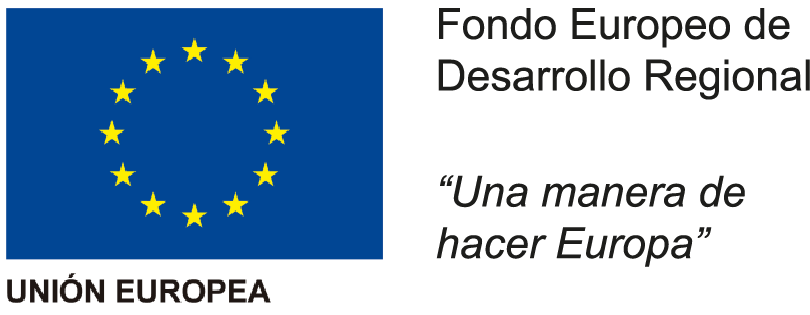Security awareness training transforms your team into a vigilant first line of defense against cyber threats. It’s the essential practice of equipping everyone with the knowledge to spot risks and protect your organization’s valuable data.
Why Your Human Firewall is Your Best Defense
Your human firewall is your best defense because technology alone cannot stop every threat. Cybercriminals target people through clever social engineering, making your employees the critical first line of defense. A well-trained, vigilant workforce can spot and stop phishing attempts, suspicious links, and unauthorized access attempts before they cause damage. A single cautious click can prevent a catastrophic breach. Cultivating a robust security culture transforms your team from a potential vulnerability into your most powerful, adaptable cybersecurity asset.
The Evolving Threat Landscape and Human Vulnerability
Your human firewall is your best defense because technology alone cannot stop all threats. Employees act as the critical first line of detection, identifying sophisticated phishing attempts and social engineering attacks that bypass automated systems. A strong security culture empowers individuals to question anomalies and report incidents immediately, transforming your workforce into a dynamic and responsive security layer. This human layer security is essential for comprehensive cyber resilience.
Calculating the High Cost of Human Error
Your human firewall is your best defense because technology alone cannot stop every threat. Security awareness training empowers employees to recognize and neutralize sophisticated social engineering attacks, phishing attempts, and malicious links before they cause a breach.
A vigilant employee is an invaluable, proactive layer of protection that technology cannot replace.
This cultivated culture of security transforms your workforce from a potential vulnerability into your most resilient security asset.
Meeting Regulatory and Compliance Requirements
Your human firewall is your best defense because technology alone cannot stop every threat. Employees who are trained to recognize phishing attempts, use strong passwords, and follow security protocols create a resilient security culture. This proactive human layer of protection identifies sophisticated social engineering attacks that bypass digital safeguards, making continuous security awareness training your most critical cybersecurity investment.
Core Components of an Effective Program
Imagine a program that truly thrives, its success woven from several core components. It begins with a crystal-clear strategic vision, a north star guiding every decision. This vision is brought to life by a meticulously designed framework of streamlined processes and robust resource allocation, ensuring smooth operation. The true heartbeat, however, is its people—a skilled, motivated team empowered by strong leadership and open communication. Finally, a continuous feedback loop acts as its compass, allowing for agile adaptation and refinement, turning a good initiative into an extraordinary and enduring success story.
Identifying and Classifying Sensitive Information
An effective program is built on a foundation of clear, measurable objectives that define its purpose and desired impact. Its core components include a detailed implementation plan outlining key activities, timelines, and resource allocation. Robust monitoring and evaluation systems are essential for tracking progress against goals and ensuring accountability. Furthermore, strong stakeholder engagement and a sustainable program management framework are critical for long-term viability and success, allowing for data-driven adjustments and continuous improvement.
Recognizing Phishing and Social Engineering Attacks
An effective program is built upon a clear and measurable objective, a well-defined scope, and a realistic timeline. Its success hinges on a strong project management framework, ensuring optimal resource allocation and proactive risk mitigation. Crucially, it requires a dedicated team with clear roles and open communication channels. This structured approach to program management is the cornerstone of delivering exceptional value and achieving strategic goals efficiently.
Creating and Managing Strong Passwords
An effective program’s core components include a clearly defined mission statement that guides all activities. It requires specific, measurable objectives to track progress and ensure accountability. A detailed implementation plan outlines necessary resources, timelines, and personnel roles. Finally, a robust monitoring and evaluation framework is essential for assessing impact and facilitating continuous improvement, which is a cornerstone of successful program management.
Safe Practices for Remote and Mobile Work
An effective program’s core components form a robust framework for success. It begins with clearly defined, measurable objectives to guide all efforts. A meticulously planned strategy outlines the necessary resources, timeline, and key milestones. Crucially, a system for continuous monitoring and evaluation ensures the program remains on track and can adapt to challenges. This dynamic cycle of planning, execution, and assessment is the engine of real impact. Strong program management is the cornerstone of any successful initiative, turning vision into tangible, valuable results.
Proper Use of Social Media and the Internet
An effective program is built upon a foundation of clear, measurable objectives that define its ultimate success. Its core components include a robust implementation plan with allocated resources, a strong monitoring and evaluation framework for data-driven adjustments, and a focus on sustainable impact. A truly dynamic program thrives on continuous feedback and agile adaptation. Securing genuine stakeholder engagement is paramount for creating lasting, meaningful change and ensuring long-term program sustainability.
Engaging and Effective Training Methodologies
Engaging and effective training methodologies prioritize active participation over passive learning. Techniques like scenario-based learning, interactive workshops, and gamification increase knowledge retention by immersing learners in practical application. Collaborative group projects foster peer-to-peer learning and critical thinking. A cornerstone of modern training is personalized learning paths, which adapt content to individual pace and performance, ensuring mastery before progression.
This tailored approach significantly boosts engagement and long-term skill application by addressing unique learner needs.
Incorporating regular, constructive feedback loops further solidifies understanding and continuous improvement.
Moving Beyond Annual Compliance Checkboxes
Engaging and effective training methodologies blend interactive elements with practical application to maximize knowledge retention. Techniques like scenario-based learning and microlearning modules cater to diverse learning styles and busy schedules. Incorporating hands-on workshops and regular feedback loops ensures skills are not only learned but mastered. This approach to corporate training solutions fosters a more competent and confident workforce, directly impacting organizational performance and employee satisfaction.
The Power of Simulated Phishing Exercises
Modern employee training programs thrive on interactive, learner-centric approaches that boost retention and application. Key methodologies include microlearning for digestible content, scenario-based role-playing for practical skill application, and gamification to enhance motivation through rewards. A truly effective program adapts to diverse learning styles rather than forcing a single method. Incorporating social learning and continuous feedback loops ensures the training is not just an event, but an integrated part of professional development.
Utilizing Microlearning for Better Retention
For truly effective training methodologies, ditch the boring lectures. The best programs are interactive and hands-on, boosting knowledge retention. Think short video modules, real-world scenario practice, and collaborative group workshops. This approach, a cornerstone of modern corporate learning strategies, keeps learners engaged and makes new skills stick. It’s about doing, not just hearing, which leads to real, measurable results.
Gamification to Boost Participation
Modern training methodologies must be interactive to ensure knowledge retention and practical application. Effective corporate training programs leverage microlearning for digestible content, gamification for increased motivation, and hands-on simulations for real-world practice. This approach moves beyond passive lectures, fostering an environment of active participation where learners can immediately apply new skills, leading to measurable performance improvements and a strong return on investment.
Building a Culture of Shared Responsibility
Building a culture of shared responsibility requires a deliberate shift from individual task completion to collective ownership of outcomes. It is founded on transparent communication, Security Awareness Training where team members understand how their roles interconnect and contribute to the larger organizational vision. This approach fosters a proactive environment where individuals feel psychologically safe to identify potential problems and collaborate on solutions. Ultimately, it empowers employees, strengthens team cohesion, and drives sustainable success by making everyone a stakeholder in the company’s performance.
Fostering Open Communication and Reporting
Building a culture of shared responsibility is a cornerstone of effective team management. It empowers individuals to take ownership of their work and its impact on collective goals, fostering a proactive environment where success and problem-solving are communal efforts. This approach enhances accountability, boosts morale, and drives superior organizational performance by ensuring everyone is invested in the outcome.
Empowering Employees to Become Champions
Building a culture of shared responsibility is the cornerstone of a high-performing team. It requires transparent communication and a clear definition of success where everyone understands their impact on the collective goal. This approach to organizational accountability fosters proactive problem-solving and mutual support, transforming individual effort into a powerful, unified force that drives sustainable growth and innovation.
Integrating Security into Company Values
Building a culture of shared responsibility is a cornerstone of high-performing teams, transforming individual contributors into a cohesive, empowered unit. This organizational culture transformation thrives on transparency and collective ownership of both successes and setbacks. Teams proactively identify challenges and collaborate on solutions, ensuring everyone is invested in the outcome. This dynamic environment fosters innovation, accelerates problem-solving, and dramatically boosts overall morale and accountability across the entire organization.
When every team member feels personally invested in the collective outcome, accountability shifts from a managerial duty to a shared value.
Measuring Success and Program Improvement
Measuring success and driving program improvement requires a data-informed feedback loop. Establish clear, quantifiable key performance indicators (KPIs) aligned with strategic goals from the outset. Consistently track these metrics alongside qualitative feedback to gain a holistic view of performance. This continuous data collection allows for the identification of strengths and areas needing refinement. The true value lies in using these actionable insights to make iterative adjustments, optimizing processes, resource allocation, and ultimately, program outcomes. This cycle of measurement, analysis, and adaptation is fundamental to achieving sustainable growth and demonstrable impact.
Q: How often should we review our program’s KPIs?
A: Regularly. A quarterly review is standard, but real-time dashboards can enable continuous monitoring for more dynamic programs.
Key Performance Indicators and Metrics to Track
Effective program evaluation hinges on a robust framework for measuring success. This process involves defining clear Key Performance Indicators (KPIs) aligned with strategic goals, then systematically collecting and analyzing data. The insights gained are not merely for reporting but are the cornerstone of continuous improvement, driving strategic refinements that enhance efficiency and maximize impact. This cycle of measurement and adaptation is essential for organizational growth and achieving long-term objectives.
Leveraging Data from Phishing Simulations
Effective program evaluation is the cornerstone of strategic performance management. It moves beyond simply tracking outputs to analyzing meaningful outcomes and long-term impact. This continuous feedback loop, powered by both quantitative data and qualitative insights, identifies strengths and opportunities for growth. This data-driven approach ensures resources are allocated to what truly works. By systematically measuring success, organizations can make informed adjustments, optimize delivery, and demonstrably enhance their value proposition to stakeholders.
The Importance of Continuous Feedback Loops
Effective program evaluation hinges on defining clear, data-driven metrics that align with strategic goals. This continuous process of monitoring key performance indicators (KPIs) allows organizations to measure success objectively and identify areas for strategic refinement. Data-driven decision making transforms raw information into actionable insights, fostering a cycle of targeted program improvement and maximizing impact. This dynamic approach ensures resources are allocated to initiatives that deliver the greatest value.

